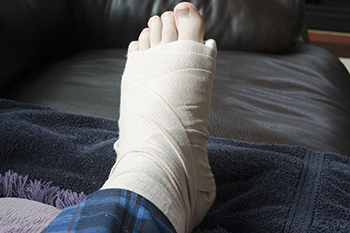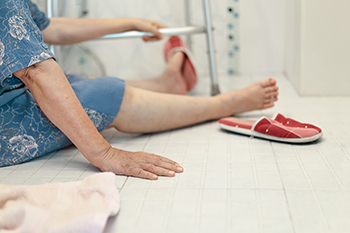If you’re an athlete, you may be familiar with stress fractures. These are tiny cracks in one or more bones of the feet that are caused by repetitive overloading of the foot. This is common in athletes, as frequent training, running, and jumping activities can put a strain on the foot bones. When a stress fracture occurs, symptoms may at first be mild. The affected bone might ache, but only during physical activity. It may disappear with rest. However, if a fracture goes untreated, the pain may increase gradually over time until it hurts constantly and interferes with all weight-bearing activities, like standing or walking. Swelling and tenderness of the areas surrounding the broken bone are also common.
Full fractures occur when one or more bones in the feet crack completely. This is often due to a high-impact injury to the area. Symptoms of a full fracture may include pain, bruising, tenderness, swelling, difficulty walking, and deformity. In some cases, pieces of a broken bone can poke through the skin in an open fracture. This type of fracture requires immediate medical attention due to the high risk of infection.
A chiropodist can diagnose a fracture through an X-ray or bone scan. Treatments may be conservative and include resting, icing, and elevating the foot for a period of time to allow it to heal. Over-the-counter medications may be suggested for pain management. Sometimes you may also be prescribed a brace or other orthotic device to take pressure off the fractured bone while it heals. More severe fractures may require surgery and a lengthy recovery period.
If you’re suffering from a broken foot bone, it’s suggested that you seek the care of a chiropodist.





